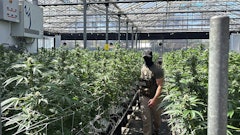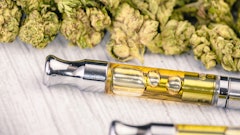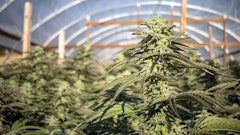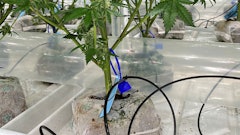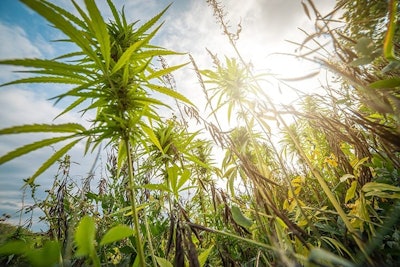
This summer, when Colorado starts allowing hemp businesses to sell products into the licensed medical and adult-use cannabis market, Andrew Brown plans to leverage the new opportunity for his companies, Mata Leao Farms and Gunbarrel Organic Extractions, a vertically integrated hemp enterprise in the southern edge of the state. He says the new move isn’t a game-changer, necessarily, but it does go a long way in leveling a playing field that so far remains uneven in the U.S.
Colorado is joining a small regulatory tilt toward lifting up a hemp industry left reeling from oversupply and the forced plowing of hot crops last fall. (Illinois also allows hemp growers to sell products, including biomass and extracted cannabinoids, into the state-licensed cannabis market).
For Brown, the argument is simple: The market is seeing great demand for CBD products, and the licensed medical and adult-use dispensaries offers a degree of regulatory oversight that the FDA has thus far been unwilling to extend to hemp businesses working in the cannabinoid space. Even on the USDA side of the hemp industry, final regulations remain in flux until a more formal document is released later this year. (The USDA’s interim final rule has been picked up by many states this year, but some, like Colorado, will continue to operate under looser 2014 Farm Bill regulations.)
The cannabis market offers rigorous testing standards to the benefit of both consumers and producers.
“The fact that you can buy something that tests at that level [in a dispensary] is a great thing and I think it’s something that good actors in the industry are going to take advantage of,” he says. “That’s certainly something that we’re going to take advantage of.”
But that tension between the nascent hemp market and the federally regulated hemp industry is something that concerns many farmers. Testing regulations will make it more difficult to grow crops that are compliant (under the 0.3% THC threshold) and profitable (somewhere above the 8% CBD content that the THC ratio forces).
This new policy from Colorado doesn’t solve the question of hot crops. If a crop exceeds the 0.3% THC limit, the farmer may not simply sell it into the state-licensed cannabis market. And so, the cap on THC remains an issue of great debate.
“The biggest obstacle that’s coming down the pike is how the testing procedures are put in place federally under the 2018 Farm Bill,” Brown says.
Right now, in Colorado, the 0.3% THC limit isn’t formally mandated across the board, he points out. Growers are still working under a research pilot program paradigm, and the industry has experienced some wiggle room—allowing crops testing as high as 0.39% THC content to slip into the market. But that won’t fly under the USDA’s impending oversight.
Even at 0.39% THC or upwards of 1% THC, which many in the industry have urged the USDA to adopt as a content limit, the crop would remain a Type III cannabis chemovar—"CBD-dominant with low THC content that provides little to no intoxication.”
Further, according to the USDA’s interim final rule (which, again, Colorado is now following this season), crops must be tested no more than 15 days prior to harvest. The state’s industry stakeholders are calling for a 30-day window on testing, allowing growers to catch their crops earlier (perhaps right before they hit the threshold of THC content) and to harvest their crops without feeling rushed.
“We’ve been very vocal that Colorado has a lot more knowledge about this than someone sitting in Washington, D.C.,” State Sen. Don Coram, a grower himself, told the Colorado Sun. “If we follow the regulations as written by the U.S. Department of Agriculture, there won’t be a hemp crop.”














